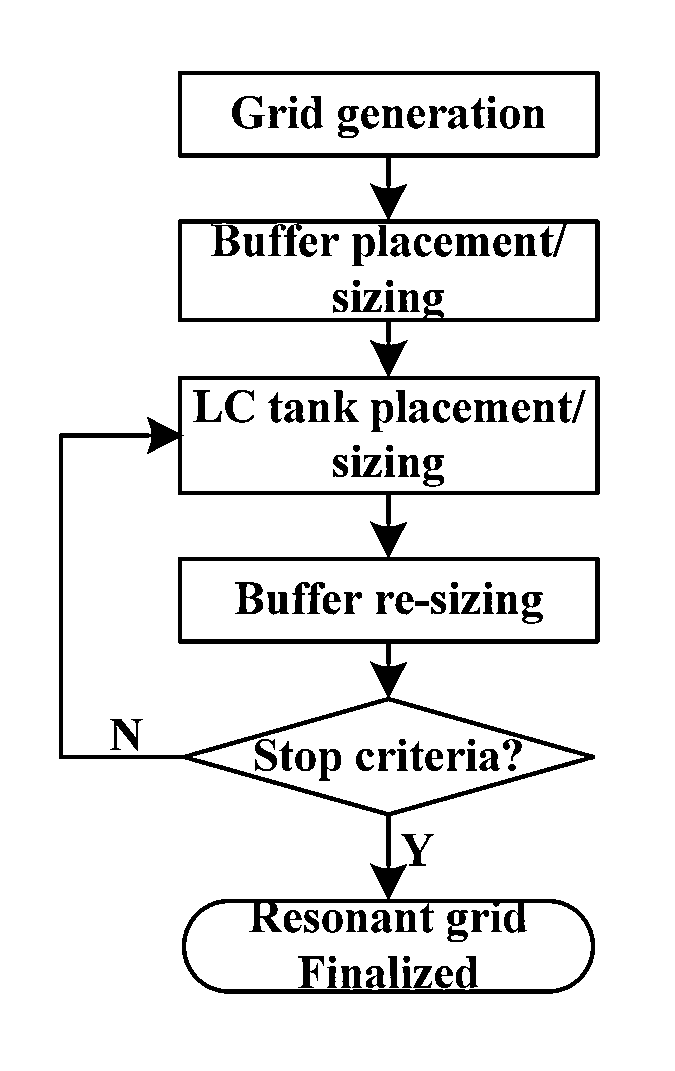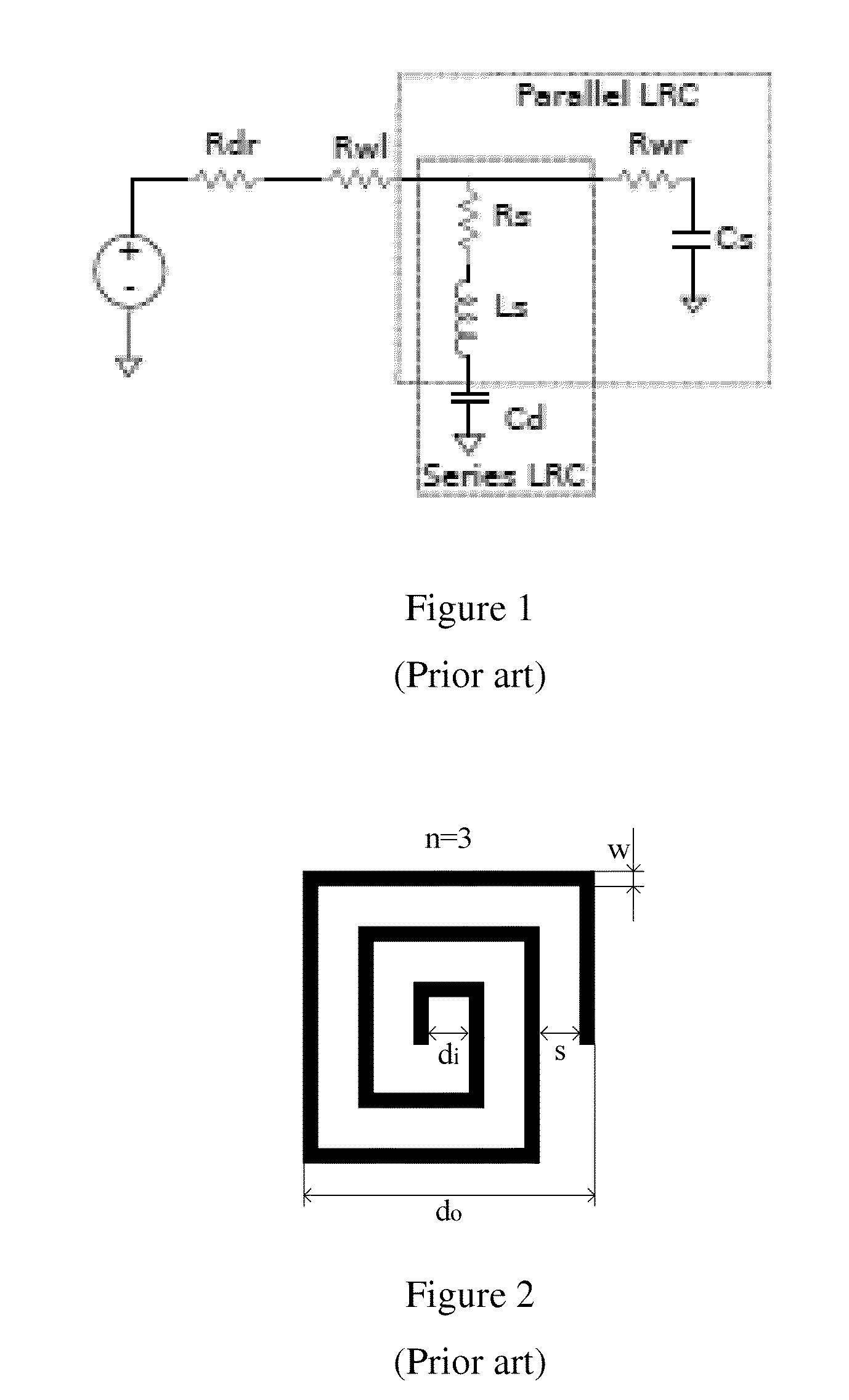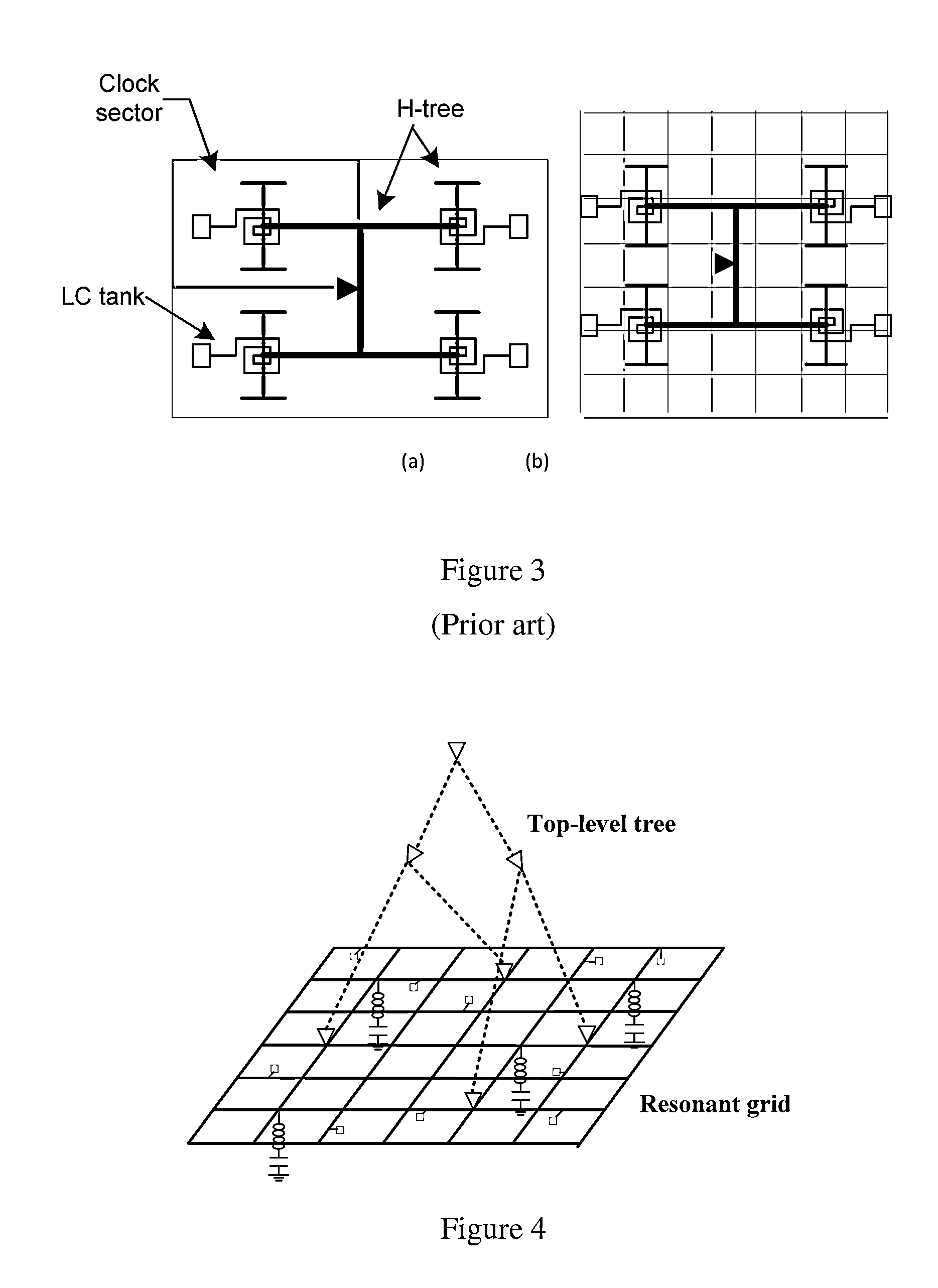Distributed resonant clock grid synthesis
a technology of distributed resonant clocks and clock distribution networks, applied in the direction of generating/distributing signals, instruments, program control, etc., can solve the problems of increasing failure rates, power consumption, and preventing the synthesis of clocks, and achieve the effect of significant power savings in the resulting devices
- Summary
- Abstract
- Description
- Claims
- Application Information
AI Technical Summary
Benefits of technology
Problems solved by technology
Method used
Image
Examples
Embodiment Construction
[0031]The presently disclosed subject matter now will be described more fully hereinafter with reference to the accompanying drawings in which one embodiment is shown. However, it should be understood that this invention may take many different forms and thus should not be construed as being limited to the embodiment set forth herein.
[0032]All publications mentioned herein are incorporated by reference for all purposes to the extent allowable by law. In addition, in the figures, identical numbers refer to like elements throughout. Additionally, the terms “a” and “an” as used herein do not denote a limitation of quantity, but rather denote the presence of at least one of the referenced items.
[0033]As previously described, parasitic resistances of clock networks shift their resonant frequency and cause attenuated voltage swings that can result in malfunction of logic circuit. The currents that pass through an LC tank 10, 50 (see FIGS. 1 and 4) can be very large at resonant frequency. ...
PUM
 Login to View More
Login to View More Abstract
Description
Claims
Application Information
 Login to View More
Login to View More - R&D
- Intellectual Property
- Life Sciences
- Materials
- Tech Scout
- Unparalleled Data Quality
- Higher Quality Content
- 60% Fewer Hallucinations
Browse by: Latest US Patents, China's latest patents, Technical Efficacy Thesaurus, Application Domain, Technology Topic, Popular Technical Reports.
© 2025 PatSnap. All rights reserved.Legal|Privacy policy|Modern Slavery Act Transparency Statement|Sitemap|About US| Contact US: help@patsnap.com



